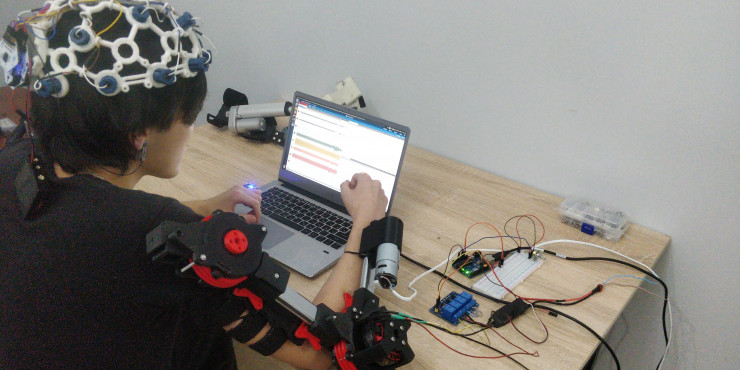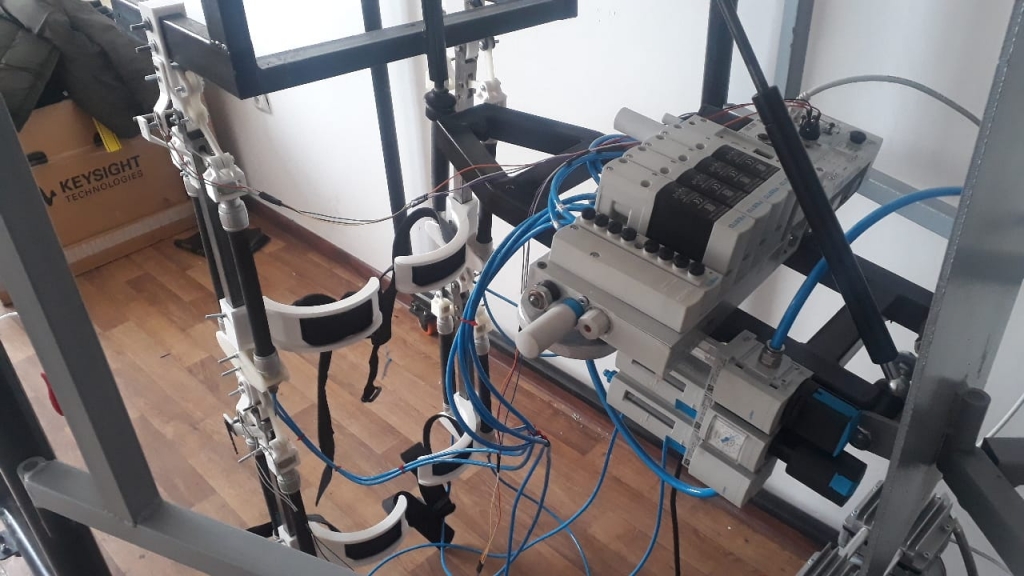ReLive project – a thought-driven exoskeleton for stroke survivors

Nazarbayev University scientists, together with doctors, have developed a rehabilitation program for stroke survivors. The program includes the use of an exoskeleton, which is controlled by thoughts – the device reads brain signals.
The founders of the project, are Nazarbayev University professor Prashant Jamwal and NU Data Science Ph.D. student in Beibit Abdikenov. In total, the team consists of 18 people – a neurophysiologist, neurologist, physiologist, electronics specialists, mechanics, roboticist, machine developers, artificial intelligence experts, and programmers.
The project was named ReLive. The developers were supported by NURIS (Nazarbayev University Risk-taking Inspiration Synergy) – a program to support startups and business ideas at an early stage of development.
The aim of the project is to build an affordable gait rehabilitation robotic system which shall be used for robot assisted physiotherapy. This therapy shall be administered to stroke survivors, who have disabilities after surviving stroke.
The proposed gait robot is innovative in terms of its design and control architectures. The lightweight robot design provides naturalistic motions owing to additional degrees of freedom and is cost effective due to the use of air muscle actuators in place of expensive motors. Equipped with an ‘assist-as-needed’ control approach, the robot intelligently provides adaptive robotic assistance depending on the patient’s disability levels.
Employing a graphic user interface, two-way communication between the therapist and the robot can be established. The therapist can evaluate treatment efficacy by analyzing muscle activation signals from the gait robot and can alter treatment modes in real-time. Initially, the gait robot shall be sold to the hospitals in Kazakhstan through the Ministry of Healthcare and later it will be exported to central Asian and other developing countries.

On most devices of this kind, the trajectory of movement is set initially. And the project team is trying to teach artificial intelligence to read brain signals and transmit them to the exoskeleton. The researchers have own algorithm for signal recognition. In fact, a patient can mentally control the exoskeleton. In this case, the neural network is trained and improved with each use. The more data it has, the better it will work.
Special sensors read the strength of the hand through the mind– is it possible for the patient to move it or not.
If a person can move his hand himself, the robot does not help him, it will just support. If a person cannot move, the sensors detect it, the exoskeleton understands this and connects the brain signal recognition algorithm. A patient can tell the program:” Raise your hand. ” but as soon as the hand itself can move; it will switch off the robot again.
The rehabilitation program is designed for a month, but the doctor will set the actual duration of the treatment protocol.
The project is already done, but scientists have to test the system. The tests are scheduled for next year.




